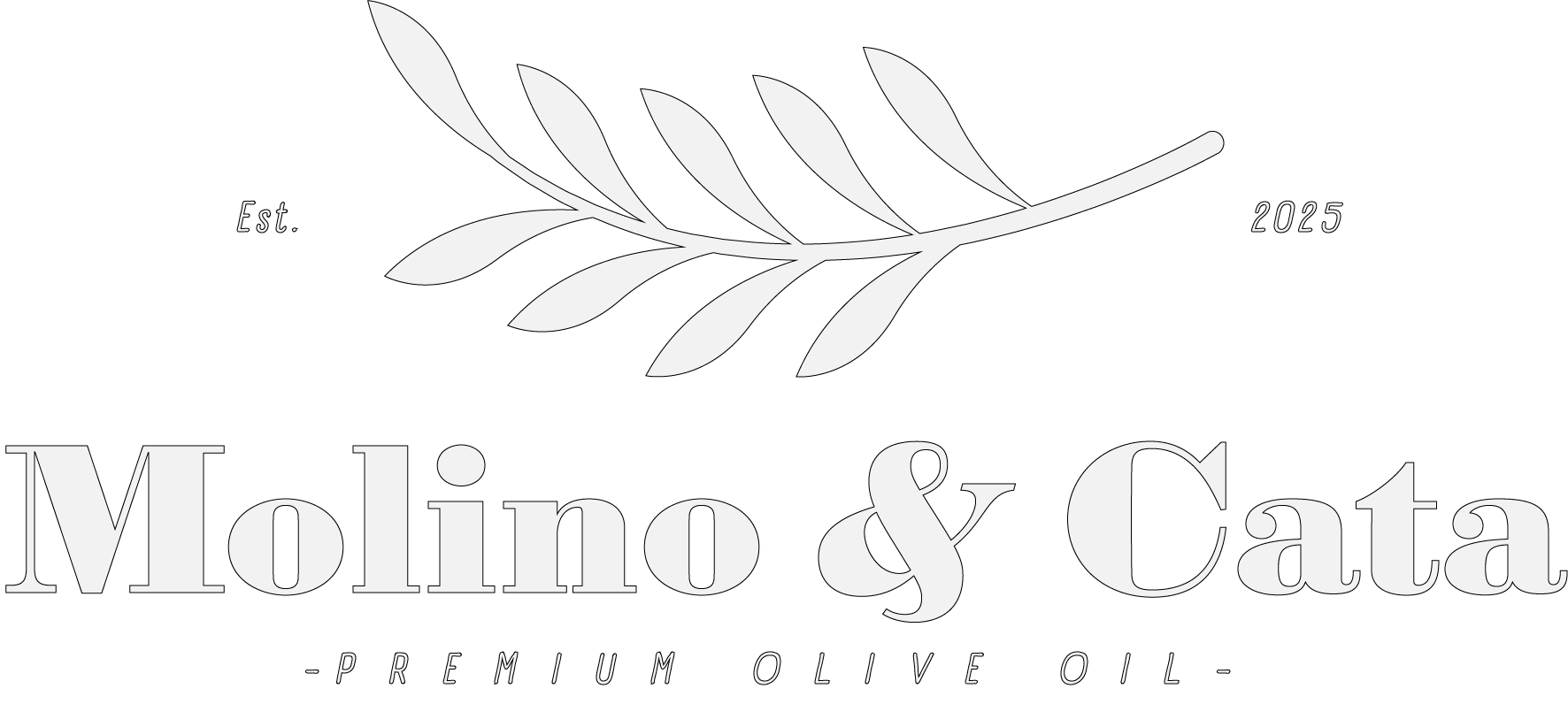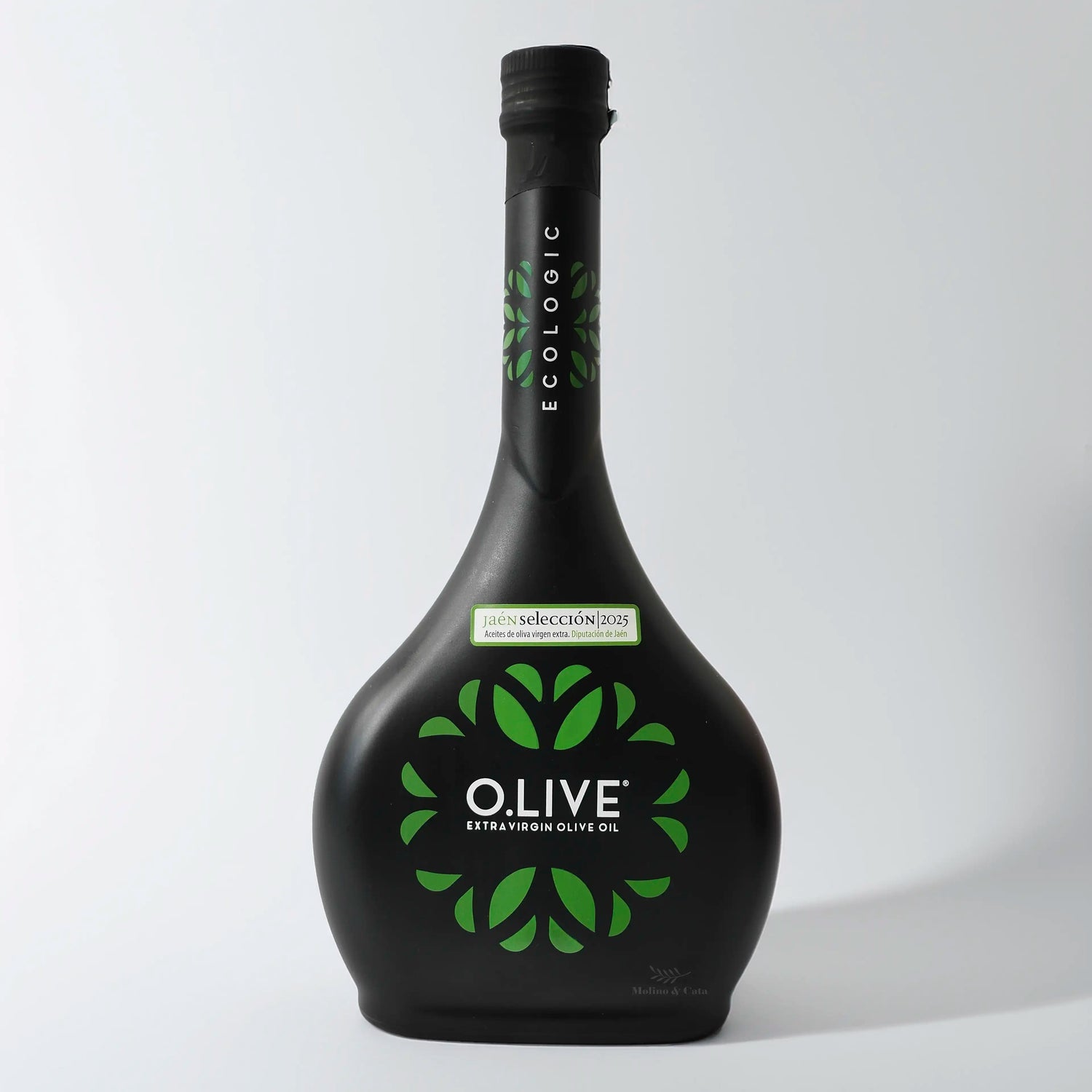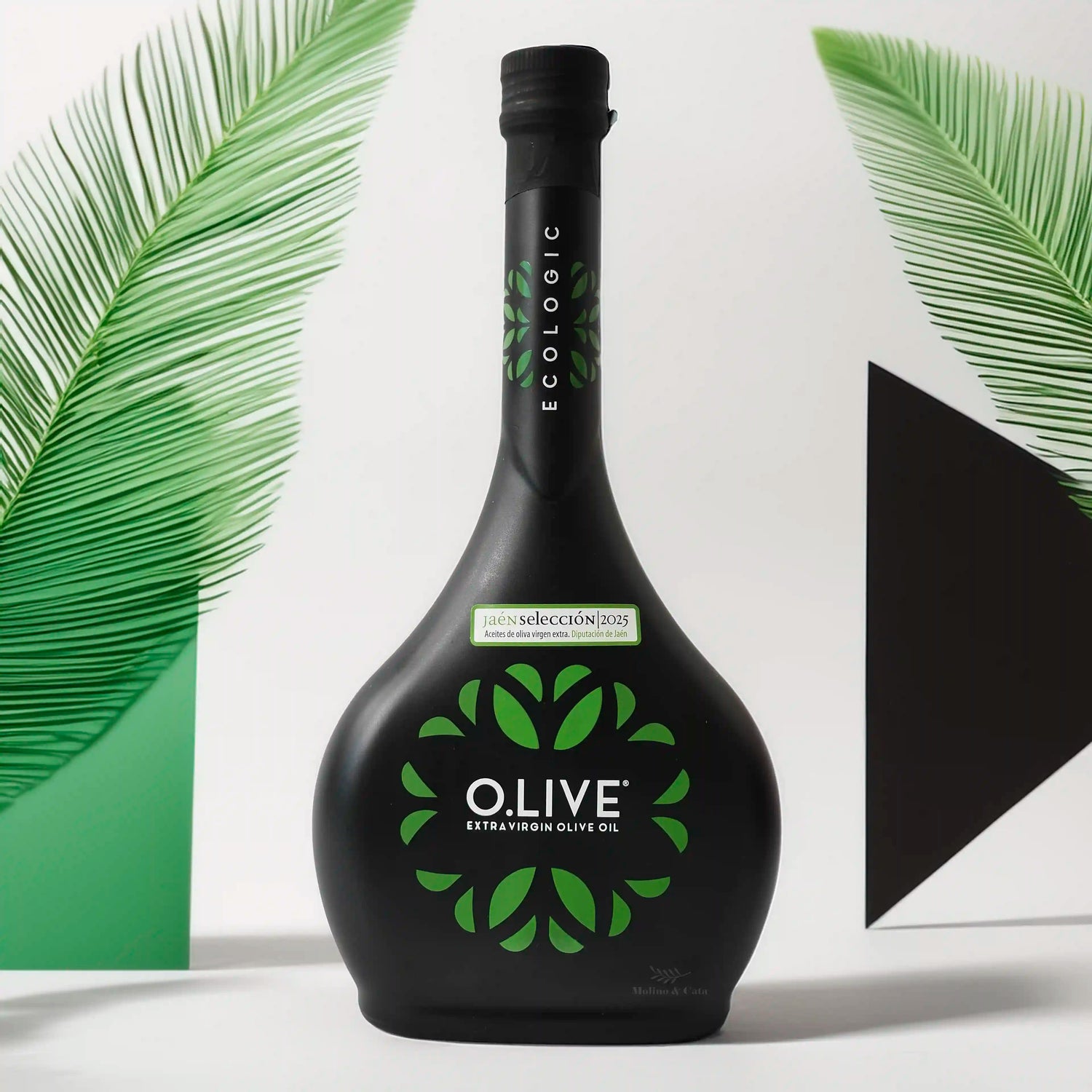Olive Oil Dictionary
Types of Oil and Commercial Categories
Extra virgin olive oil (EVOO)
Oil obtained solely through mechanical means, directly from healthy, fresh olives. It is of the highest quality, free from organoleptic defects, with a fruity flavor and a maximum acidity of 0.8%.
Virgin olive oil
Obtained solely by mechanical means, it may present slight sensory defects that generally go unnoticed by the consumer. Its acidity must not exceed 2%.
Lamp oil
Virgin oil with significant sensory defects and an acidity level above 2%, making it unsuitable for direct consumption. It must be refined before use as food.
Refined oil
Oil obtained from lampante oil, chemically treated to eliminate unpleasant odors, flavors, and colors. It is not consumed directly, but rather in a mixture with virgin oil.
Olive oil (blend)
Product resulting from the combination of refined oil with a certain proportion of virgin or extra virgin oil, offering a smoother and more balanced flavor, suitable for regular consumption.
Olive pomace oil
Obtained through chemical extraction of olive pomace (solid olive residue). After refining, it is blended with virgin olive oil, resulting in consumption, although with inferior sensory quality.
Unfiltered raw oil
Extra virgin olive oil that is not filtered after extraction, retaining natural particles that give it greater intensity of flavor and aroma, but less stability during storage.
Cold extraction / First cold pressing
Extraction methods ensure that the oil has been obtained at temperatures below 27°C, preserving its organoleptic and health-promoting properties to the fullest.
Manufacturing Processes
Harvest
Harvesting the olives, whether carried out manually or mechanically, is crucial to the final quality of the oil.
Milling
Crushing olives to form a paste, facilitating oil extraction.
Shake (malaxation)
Slow and controlled process that combines small oil droplets into larger drops, facilitating their subsequent separation.
Pressing / Centrifugation
Methods for separating oil from the remaining solid and liquid components. Centrifugation is the most common method today due to its efficiency. Pressing is rarely used. It can only be found in some African countries.
Filtered
Removal of organic matter from the oil to improve its appearance, flavor and stability
Storage
Storage of the oil in tanks protected from light, heat, and air, which are essential for maintaining its properties.
Packing
Bottling or packaging of the oil, generally in containers that protect the product from light and air, prolonging its freshness.
Quality Parameters
Free acidity
It measures the initial quality of the fruit and the efficiency of the extraction process. Low values indicate healthy olives and rapid processing.
Peroxide index
Indicates the initial degree of oxidation of the oil. Low levels reflect freshness and proper storage.
UV absorbance (K232, K270)
Primary and secondary oxidation indicators of oil, essential for evaluating freshness and purity.
Polyphenols
Natural antioxidant compounds that determine the sensory (bitterness, spiciness) and nutritional quality of the oil, related to its stability and beneficial effects on health.
Ethyl esters
Markers of unwanted fermentation of olives before the extraction process, indicating lower quality.
Sensory Analysis (Tasting)
Fruity
A set of aromas reminiscent of fresh olives, essential in quality oils.
Bitter
Taste sensation associated with fresh olive oils rich in polyphenols, reflecting quality and health benefits.
Spicy
Itching or burning sensation in the throat and mouth, appreciated as a positive indicator of freshness and high phenolic content.
Defects
Unpleasant flavors and odors that indicate problems with the raw material or production, such as mold, rancidity, or vinegariness.
Tasting panel
A trained group of experts who sensorially evaluate oils, officially determining their commercial category according to regulations.
Olive Varieties
Picual
Robust and powerful oil, characterized by high phenolic content, bitterness and spiciness, very stable against oxidation.
Arbequina
Smooth, sweet and delicate oil, with a mature fruitiness and nuances of almond and apple, less stable but highly appreciated when raw.
Hojiblanca
Balanced oil, with moderate bitterness and spiciness, aromas of fresh grass, very versatile culinary.
Cornicabra
Aromatic oil, with a medium-intense fruitiness, good balance between bitterness and spiciness, excellent stability.
Weevil
Delicately sweet oil, with mature notes and slightly bitter, ideal for consumers looking for milder flavors.
Empeltre
Very smooth and sweet oil, ripe fruity, ideal for consuming raw due to its delicate flavor.
Koroneiki
Greek variety with an intense green fruitiness, notably spicy and bitter, appreciated for its excellent stability.
Regulations and Certifications
International Olive Council (IOC)
International organization that establishes global standards and norms for olive oils and olives.
EU Regulations
European regulations that define quality, labeling, and marketing requirements for oils.
Protected Designation of Origin (PDO)
European certification that guarantees the quality and specific geographical origin of the oils.
Protected Geographical Indication (PGI)
Seal that certifies characteristics linked to a region, although with less stringent requirements than the PDO.
Organic farming
Certified production that excludes synthetic chemicals and protects biodiversity and the environment.
Gastronomic Terms
Coupage
Strategic blend of different oils to achieve specific sensory profiles.
Single variety
Oil made exclusively with a variety of olives to highlight their characteristics.
Pairing
Gastronomic combination of oil with specific dishes to mutually enhance their flavors.
Raw use
Consume directly without cooking, to fully enjoy its flavor and aroma.
Frying
Cooking technique where olive oil stands out for its thermal stability.
Sofrito
Mediterranean culinary base of vegetables slowly sautéed in olive oil.
Dressing
Simple and direct seasoning of cold dishes with raw oil.
Candied
Slow cooking at low temperature in oil, preserving flavor and texture.
Textures (foams, emulsions)
Culinary innovation with olive oil to provide new gastronomic sensations.
Share












